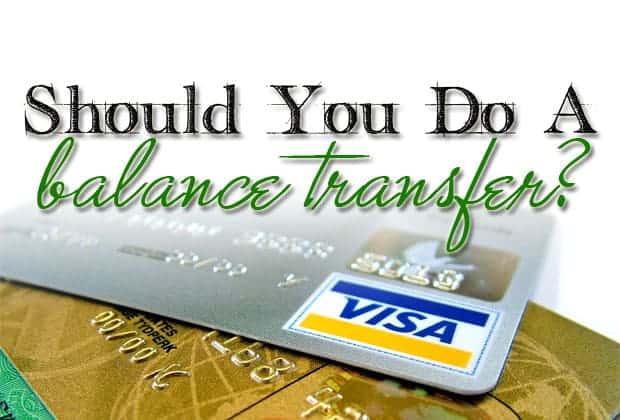One of the major debt reduction strategies touted by just about everyone is the balance transfer.
The idea behind the balance transfer is that you should open a credit card account that offers a special introductory rate on balance transfers, usually zero percent. Without interest, you are able to put your entire payment toward reducing the principal, helping you get out of debt faster and saving you hundreds of dollars.
In many cases, a balance transfer can be a smart choice. However, a balance transfer isn’t always the right choice. You need to look at your financial situation, and possibly consult with a professional, before deciding to move forward.
When A Balance Transfer Makes Sense
The main advantage to a balance transfer is that you don’t pay interest on the balance. However, in order for a balance transfer to be fully effective, you need a plan for paying it off before the introductory period ends. Once the introductory period ends, you could find yourself paying a much higher interest rate — one that offsets your previous savings.
If you can get a long introductory period (between 12 and 18 months if possible), and you have a way to pay off the balance in that time, it makes sense, especially if the balance transfer fee is low, or waived.
Also, it’s important to avoid racking up more debt in that time. So, if you decide to use a balance transfer, you need to stop debt spending first. One of the biggest dangers of a balance transfer is that, after you move your balance to the new card, you see your old card as “open” and “available” and you run up more debt.
When To Avoid A Balance Transfer
While a balance transfer can be a great debt reduction tool, the reality is that you shouldn’t always complete one. First of all, before you transfer your balance, you need to stop debt spending. Before you transfer a balance, make sure that you have changed your money habits and you are living within your means. Next, you need to have a plan to pay off the balance transfer.
Also, watch out for some of the pitfalls associated with certain balance transfer credit cards. Take a look at the terms and conditions and watch out for these red flags:
- High balance transfer fee: Most credit cards charge between three and five percent of your balance as a fee. Often there is a minimum fee as well. Run the numbers. If your fee is on the high end, and you have a short introductory period, and you won’t pay off your debt in that time, the fee you pay might offset your interest savings.
- Deferred interest: Some credit cards charged deferred interest. Your payment reflects a lack of interest during the introductory period, but interest accrues anyway, on a conditional basis. If you don’t pay off your balance with the intro period, all of that interest is then added to your balance and you have to pay it. This can be devastating, and undo all of your work.
- Short introductory period: If you only have six months to pay of the debt before your interest rate rises, especially if it’s a very high regular rate, you might end up worse off. This is especially true if the deal comes with deferred interest.
Like any financial tool, a balance transfer can be problematic if it isn’t used correctly.
Take the time to evaluate your situation, consider your options (like negotiating with your credit card company), and then make a decision about whether or not you really should make a balance transfer.


I think a low rate balance transfer is a good strategy under the conditions you mention. I’ve done it a couple of times. Once to pay off a truck loan and the second time to put a prepayment on our mortgage. We’re talking $20K and $25K each time. I think it’s only good if you have 0% transfer fee and low rate. Even 1% transfer fee at 0% interest I would not do. Because then you are paying 1% up front, with no benefit from the ongoing payments. I have done 0% transfer with 0.99% interest rate. As I make payments in order to reach $0.00 by the time the rate increases, my interest charged decreases.
The only caveat – my husband’s income is variable, and it was lower in Q1 this year, so we couldn’t pay as much on the card as planned. This was a bit precarious and I was stressing out a bit and even had to dip into my emergency fund. I had other options I could do if it eventually came to that (sell some stock in my second emergency fund, transfer balance to a personal LoC or HELOC) but I didn’t want to be in that position. So now I am slowly building my cash emergency fund back up and backing making $2K per month payments on the low rate card which needs to be paid by August. $6K more to go!